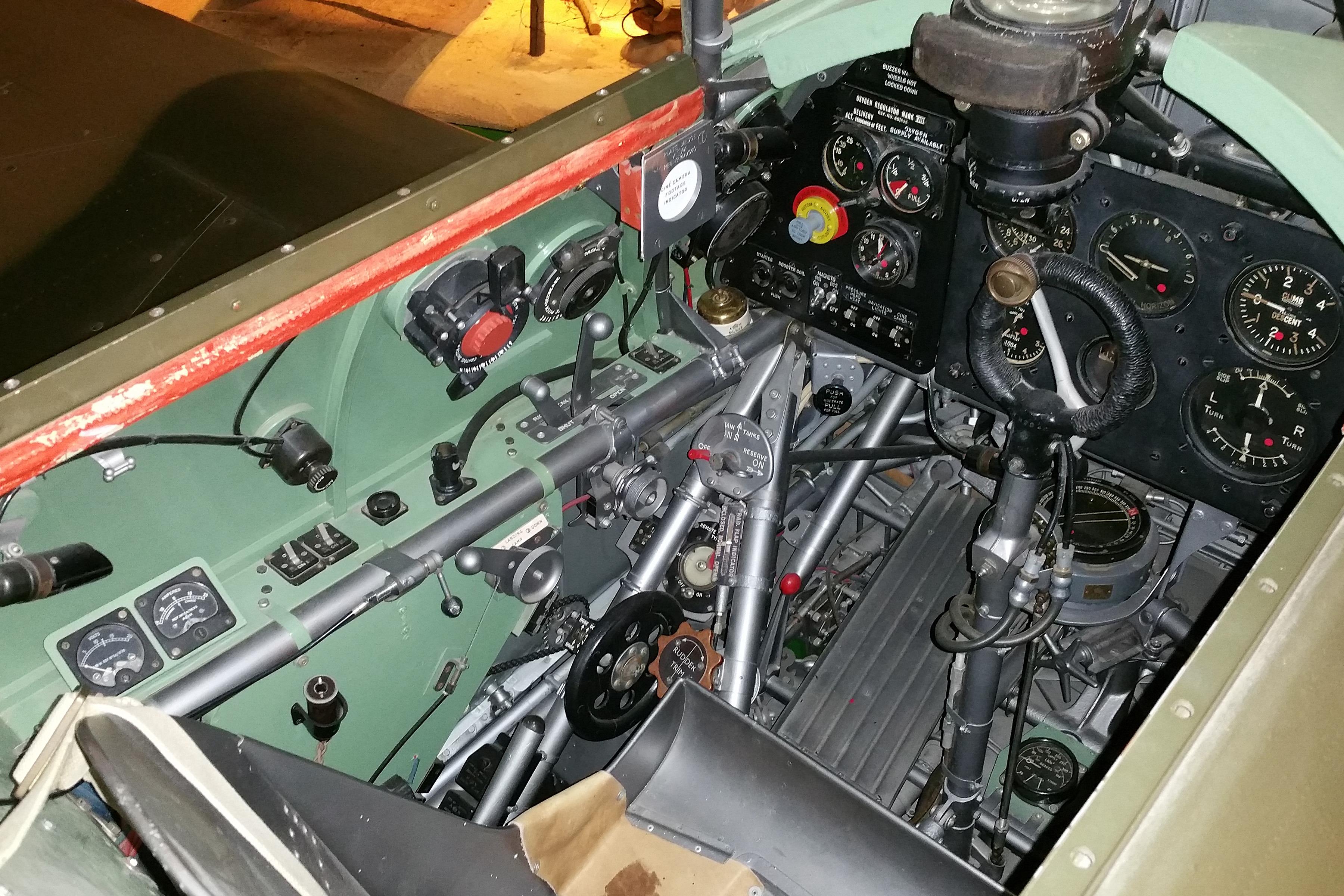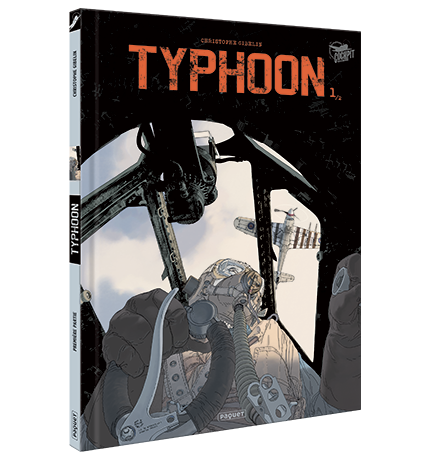Hawker Typhoon rebuild
Discussion
The similarities were more than just the shapes too- even up to the Tempest, Hawker were still using a "Warren truss" method of construction, with a triangulated tubular internal framework providing the strength. On the Hurricane it ran the full length of the fuselage, on the Typhoon and Tempest the framework held the engine and cockpit together with only the tail being stressed skin. It wasn't until the (just) post-war Fury/Sea Fury that they started using a complete stressed skin fuselage, when others had been using it for years..
I recently built the "newish" 1/72 Airfix Hurricane I and was very pleased with the experience. In particular, I liked the way they represented the cockpit interior. It helped you understand how the seat was more or less bolted on to the rear bulkhead and suspended above the "floor" of the cockpit. Indeed, the Hurricane didn't have a real floor as such, just two metal "planks" on which the pilot could rest his heels whilst operating the rudder pedals. I think the Typhoon had a similar arrangement.
If a Hurricane pilot dropped anything in the cockpit, there was no way he was going to be able to retrieve until after he had landed.
In the picture below you can see the tubular construction inside the cockpit and the foot rests.

If a Hurricane pilot dropped anything in the cockpit, there was no way he was going to be able to retrieve until after he had landed.
In the picture below you can see the tubular construction inside the cockpit and the foot rests.

saaby93 said:
they werent designing planes from scratch nor the factories to assemble them - time was short.
Amazing engine
How did North American produce the prototype Mustang so quickly? Presumably plans for something very similar had already been drawn up but as far as I know it was as close to being a brand new aircraft as any wartime fighter. Amazing engine
Dr Jekyll said:
saaby93 said:
they werent designing planes from scratch nor the factories to assemble them - time was short.
Amazing engine
How did North American produce the prototype Mustang so quickly? Presumably plans for something very similar had already been drawn up but as far as I know it was as close to being a brand new aircraft as any wartime fighter. Amazing engine
https://en.wikipedia.org/wiki/North_American_P-51_...
however
'Rather than build an old design from another company, North American Aviation proposed the design and production of a more modern fighter. The prototype NA-73X airframe was rolled out on 9 September 1940, 102 days after the contract was signed, and first flew on 26 October'
lufbramatt said:
on the Typhoon and Tempest the framework held the engine and cockpit together with only the tail being stressed skin.
Strictly speaking its the rear fuselage and tail that are stressed skin - the joint is in line with the pilots head armour..Edited by Mark V GTD on Friday 4th December 12:23
saaby93 said:
Dr Jekyll said:
saaby93 said:
they werent designing planes from scratch nor the factories to assemble them - time was short.
Amazing engine
How did North American produce the prototype Mustang so quickly? Presumably plans for something very similar had already been drawn up but as far as I know it was as close to being a brand new aircraft as any wartime fighter. Amazing engine
https://en.wikipedia.org/wiki/North_American_P-51_...
however
'Rather than build an old design from another company, North American Aviation proposed the design and production of a more modern fighter. The prototype NA-73X airframe was rolled out on 9 September 1940, 102 days after the contract was signed, and first flew on 26 October'
The proposal from the UK was to have North American licence build the P-40 for the UK, but they turned around and said we'd rather design our own one from scratch that is more modern and you can have it quicker than it would take for us to set up production of someone else's aircraft.
aeropilot said:
I think you've miss-understood that....
The proposal from the UK was to have North American licence build the P-40 for the UK, but they turned around and said we'd rather design our own one from scratch that is more modern and you can have it quicker than it would take for us to set up production of someone else's aircraft.
They were thinking "we don't really want to be lumbered with building that old truck." I like a P40, but it was really of a previous generation by then.The proposal from the UK was to have North American licence build the P-40 for the UK, but they turned around and said we'd rather design our own one from scratch that is more modern and you can have it quicker than it would take for us to set up production of someone else's aircraft.
saaby93 said:
Technology moves on
air cooled V12
https://www.youtube.com/watch?v=4bq73voK5dA
and then the jet engine came to town
https://www.youtube.com/watch?v=GkbExzH-5tQ
An american tank engine with its cooling system removed and an auxiliary power unit have what relevance? The Sabre has much higher power density than the former and the latter didn't really appear until the late 1950sair cooled V12
https://www.youtube.com/watch?v=4bq73voK5dA
and then the jet engine came to town
https://www.youtube.com/watch?v=GkbExzH-5tQ
Since my Pierre Closterman paperback was too dog eared to read, it was inevitable that I should buy the two Typhoon volumes of the Bandes Desinee books while shopping in France.
Hard cover comic book format with French text, the illustrations are superb. Ignore the story - typical sex and violence but the drawings are something else.

Hard cover comic book format with French text, the illustrations are superb. Ignore the story - typical sex and violence but the drawings are something else.

BryanC said:
Since my Pierre Closterman paperback was too dog eared to read, it was inevitable that I should buy the two Typhoon volumes of the Bandes Desinee books while shopping in France.
Hard cover comic book format with French text, the illustrations are superb. Ignore the story - typical sex and violence but the drawings are something else.

This time last year I was digging around looking for a first edition of The Big Show (I'm collecting first editions of these aviation autobiographies) and came across the French movie version, which I'd not known existed. It's available on DVD and deals with Clostermann's Spitfire years – the Tempest postscript sadly not included. Lots of good Spit footage though Hard cover comic book format with French text, the illustrations are superb. Ignore the story - typical sex and violence but the drawings are something else.


https://www.youtube.com/watch?v=sWqEAqQMVRE
Dr Jekyll said:
How did North American produce the prototype Mustang so quickly? Presumably plans for something very similar had already been drawn up but as far as I know it was as close to being a brand new aircraft as any wartime fighter.
They used the undercarriage from an AT-6 iirc and when the prototype was rolled out to show the British purchasing commission it didn't actually have an engine fitted...Someone once described the P-51 as 'little more than a fast AT-6' Mind you he was a Navy pilot so he was used to flying Bearcats.
North American were probably the most "go ahead" aircraft manufacturing company in the US in the mid 1930s. They were quite a new set up and were rather like SpaceX in many ways - prepared to be brash and quick. They were mainly a young team as well.
Consequently, they ruffled quite a few feathers in the industry - as well as the major unions. In fact, they had a massive strike at their plant in 1941 - before the war had even started (as far as US involvement was concerned).
It's dismissive of that Naval pilot to claim that the P-51 was just a more powerful T-6. For a start, the P-51 was designed with a laminar flow wing, which, at that time, was extremely advanced thinking. It also featured a novel radiator arrangement which was designed to use thrust from the radiator vent (the Meredith Effect) to help increase speed. It wasn't the first aircraft to have this feature but it was the first to make it a major part of the thinking behind the basic shape of the aeroplane.
The Bearcat was a great aeroplane, but it was a more recent design than the P-51
Consequently, they ruffled quite a few feathers in the industry - as well as the major unions. In fact, they had a massive strike at their plant in 1941 - before the war had even started (as far as US involvement was concerned).
It's dismissive of that Naval pilot to claim that the P-51 was just a more powerful T-6. For a start, the P-51 was designed with a laminar flow wing, which, at that time, was extremely advanced thinking. It also featured a novel radiator arrangement which was designed to use thrust from the radiator vent (the Meredith Effect) to help increase speed. It wasn't the first aircraft to have this feature but it was the first to make it a major part of the thinking behind the basic shape of the aeroplane.
The Bearcat was a great aeroplane, but it was a more recent design than the P-51
aeropilot said:
Yesterday, Air Leasing at Sywell, have taken the wraps of their Tempest II rebuild, so it must be getting close to first flight.
Looks terrific

I hate it when people start posts with "wow!". But wow Looks terrific



Is that an actual Centaurus and is the lubricant supply issue sorted? Or is it some other big generic radial?
Yertis said:
Is that an actual Centaurus and is the lubricant supply issue sorted? Or is it some other big generic radial?
Yes, Centaurus VI engine.And no, Shell haven't made any 100U oil since the 1980's, and I've heard in recent months (after the Navy Wings Sea Fury crash) that its believed that the very last stock of it was destroyed when Buncefield depot blew up back in 2005.
aeropilot said:
Yes, Centaurus VI engine.
And no, Shell haven't made any 100U oil since the 1980's, and I've heard in recent months (after the Navy Wings Sea Fury crash) that its believed that the very last stock of it was destroyed when Buncefield depot blew up back in 2005.
Just what is involved in producing 100U oil? I read there was a proposal to produce a batch some years ago but there wasn't enough demand for the stuff to justify it. Would it actually need new equipment?And no, Shell haven't made any 100U oil since the 1980's, and I've heard in recent months (after the Navy Wings Sea Fury crash) that its believed that the very last stock of it was destroyed when Buncefield depot blew up back in 2005.
Gassing Station | Boats, Planes & Trains | Top of Page | What's New | My Stuff



 k was that?'
k was that?' 